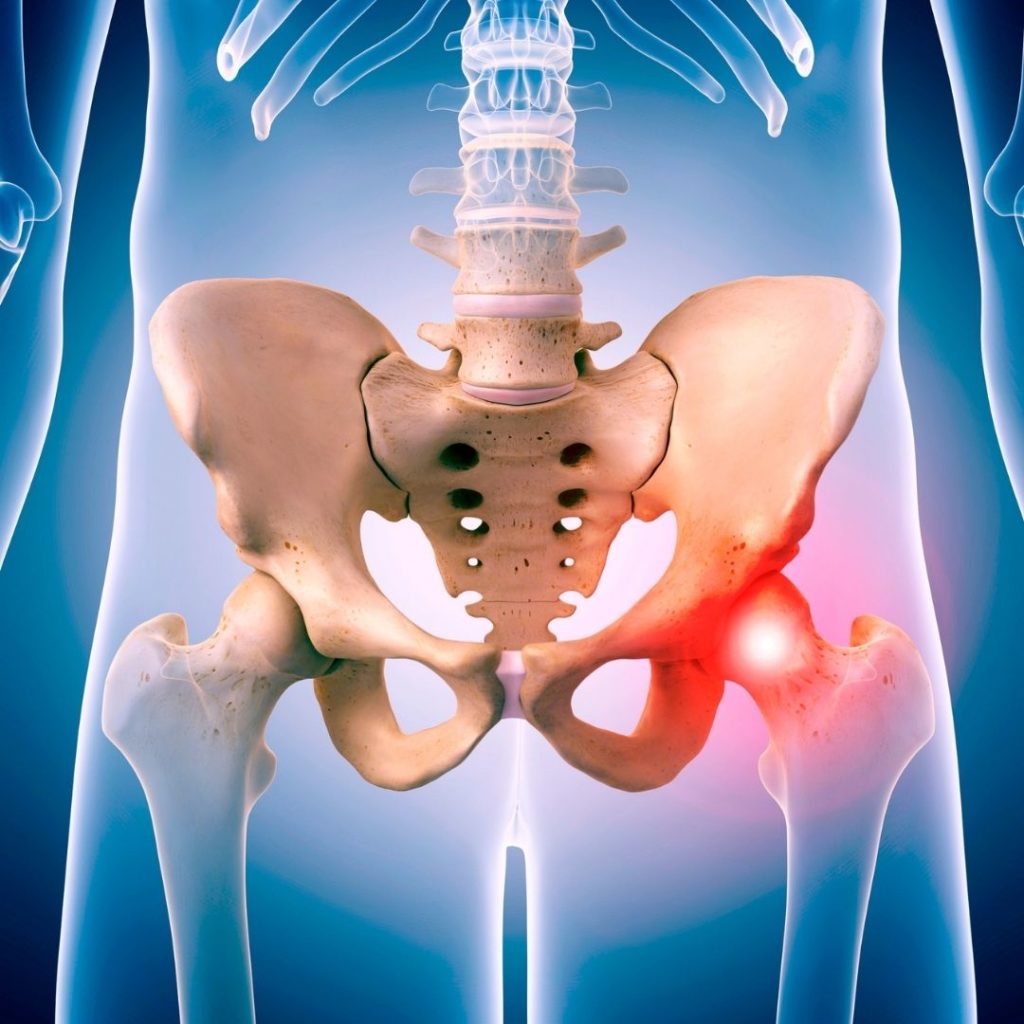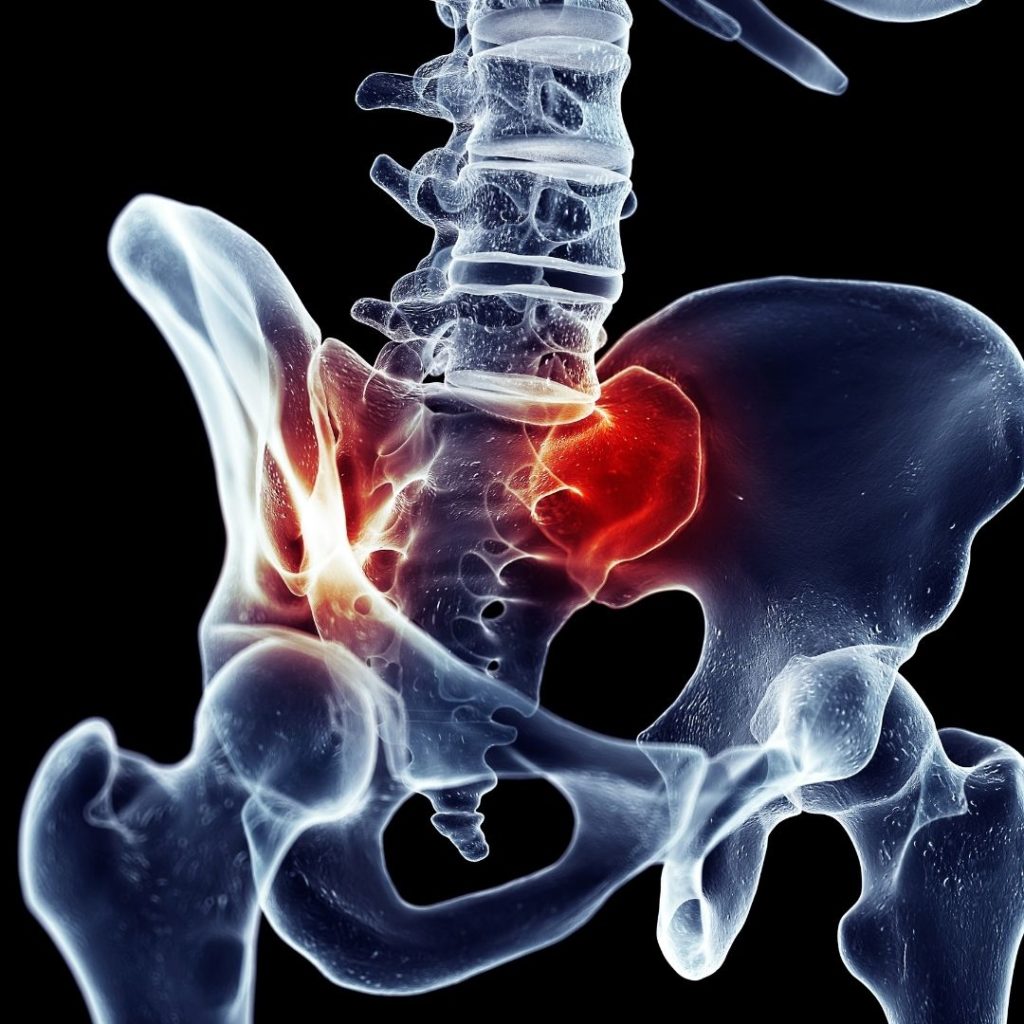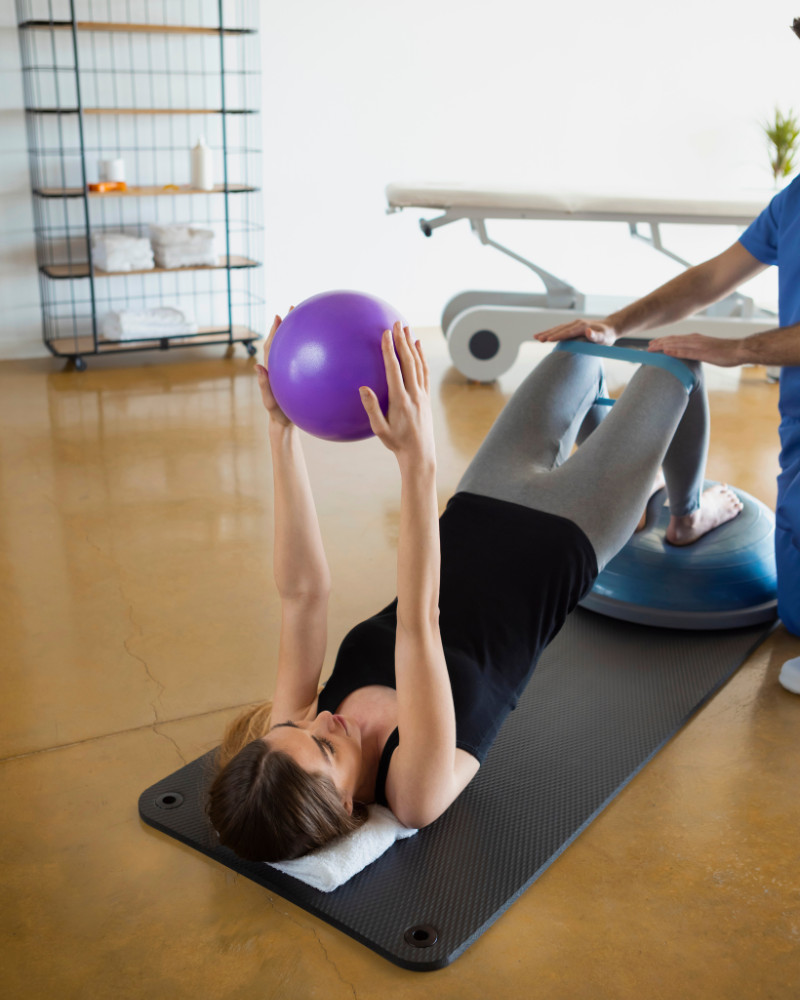Pelvic floor physical therapy is a treatment that uses physical therapy to provide an effective reconditioning of pelvic floor muscles. The goal of the treatment is to improve the strength and function of pelvic floor muscles and alleviate pain, weakness, and dysfunction. The physical therapist who treats you will either stretch the muscles if they are short and contracted or apply resistance if they are weak and dysfunctional. At H&D Physical Therapy, we specialize in pelvic floor physical therapy in Murray Hill for people of all genders. If you are located in Sutton Place and are experiencing any discomfort or issues in your bowels or pelvic floor area, then reaching out to H&D Physical Therapy may be the best option for you.
Symptoms of Pelvic Floor Dysfunction
There are so many symptoms that can give you pelvic floor discomfort or pain, and many of which you may not even realize is something to pay attention to because they can seem like something that would normally happen. Some symptoms are:

- Bowel or bladder issues including difficulty voiding, incontinence, urgency, and frequency
- Pain during or after intercourse
- Unusual heaviness in the lower abdomen
- Painful menstrual cycles
- Abdominal pain
- Pain with urination or defecation
- Low back pain, groin pain, tailbone pain
Especially for women, a lot of these symptoms can seem like normal PMS symptoms, but the issue is when it becomes absolutely unbearable to the point where functioning normally is not an option.
Treatment for Pelvic Floor Dysfunction
Now depending on the severity and pain level of the issues a patient could be experiencing, everyone will get treated differently and personally. Treatment options include:
- Soft tissue mobilization
- Myofascial release the pelvic floor muscles and surrounding structures
- Visceral mobilization
- Abdominal massage
- Postural reeducation
- Exercises for core and pelvic floor muscle coordination
Contact Us For Pelvic Floor Physical Therapy in Murray Hill
All of these treatments are not one-stop shops, and you will need to be consistent with the treatment options to alleviate the pain and discomfort you are feeling. Being consistent will only help with managing your pain and giving you a better quality of life. H&D Physical Therapy will be there with you every single step of the way, making sure that you are no longer in pain. We believe that to reach your goals; you need one-on-one time with your therapist. Our approach of combining highly skilled therapy with closely monitored personalized care has been widely recognized. Give us a call for a consultation and get your body back to normal!
Physical therapy is a type of physical therapy that directly targets the pelvic floor area. The goal of therapy in this area ranges from strengthening the muscles after an injury or relieving symptoms of pelvic floor dysfunction. If you are looking for pelvic floor physical therapy in Murray Hill, look no further than H&D Physical Therapy.
Pelvic Floor Dysfunction
People with pelvic floor dysfunction are unable to properly relax their pelvic floor muscles to have a bowel movement. A properly functioning pelvic floor allows you to control when you urinate and release feces and flatus (gas). It can be extremely embarrassing and uncomfortable when these bowel movements happen uncontrollably, which is why pelvic floor therapy in Sutton Place can be beneficial.
The pelvic floor muscles support the pelvic organs (bowel, bladder, and uterus in women) from the bottom of the pelvis. When the pelvic floor is properly relaxed, urine and feces may be passed out of the body.
Layers and layers of tissue and muscle make up the floor of the pelvis. These layers are able to stretch from the pubic bone at the front of the body to the coccyx at the back. They also stretch side to side from one sitting bone to the other.
Symptoms
- Constantly needing to use the bathroom
- Pain when urinating
- Lower back pain
- Discomfort in the pelvic area, genitals, or rectum
- Long-term constipation or painful pushing to pass a bowel movement
- Leaking stool or urine
In Men
Pelvic floor dysfunction can affect both men and women as the pelvic floor muscles play such a big part in sexual activity and function for men and women. However, there are some pelvic conditions that can be unique to solely males or females.

For men, the pelvic floor controls erectile function and ejaculation. It can also exist while a man is suffering from other conditions that may include:
- Male urinary dysfunction
- Erectile dysfunction
- Prostatitis
In Women
In women, the ability to contract your pelvic floor plays a part in sexual stimulation and arousal. Also, the pelvic floor serves as additional support for the baby during pregnancy for women who become pregnant. Then during the birthing process, it’s crucial that the woman’s pelvic floor is relaxed so as not to cause problems while the baby is exiting the birth canal.
It is important to note that pelvic floor dysfunction is not the same thing as pelvic organ prolapse. Pelvic organ prolapse occurs when the muscles that hold a woman’s pelvic organs where they are supposed to be become too loose to hold them in place. This can cause the woman’s pelvic organs to visibly extend out of the vagina or rectum. If this happens, the woman may need to physically push these organs back into her body with her hands. Pelvic floor physical therapy in Murray Hill can be helpful to prevent this from occurring.
Diagnosis
Suppose you have any of the symptoms listed above or have any other reason to believe you have pelvic floor dysfunction or pelvic organ prolapse. In that case, it’s vital to make an appointment as soon as you can with a healthcare professional. In your appointment, your healthcare provider may ask you questions such as:
- Have you ever given birth?
- Do you have a history of urinary tract infections?
- If you are female, does it often hurt when you have sex?
- Is it painful and requires much effort for you to pass a bowel movement?
After asking these questions, your healthcare provider could do a physical examination to gauge the strength of your pelvic floor muscles. This will probably involve the professional checking these muscles with their hands or giving you a vaginal or intrarectal exam.
Treatment
Although pelvic floor dysfunction may be uncomfortable, it can be treated relatively quickly in most cases. Surgery is not a needed treatment, and most people can seek relief through physical therapy, especially helpful getting pelvic floor physical therapy in Murray Hill at H & H&D Physical Therapy.
The most common treatment for pelvic floor dysfunction is biofeedback. This course of treatment is painless and helps over 75% of people who have been diagnosed with pelvic floor dysfunction. With biofeedback, a healthcare professional would use sensors and video to watch how your pelvic floor muscles react when you try to clench or relax them. Your healthcare provider then gives you feedback on what you are doing and how your muscles are reacting.
Another very common treatment is pelvic floor physical therapy. This can be done while biofeedback therapy is happening. Your physical therapist may show you how to do Kegels, which are popular exercises that involve contracting and then relaxing the pelvic floor muscles in order to strengthen them.
Some external physical therapy techniques include trigger point therapy, skin rolling, and myofascial release (deep tissue massage). These techniques involve professionals putting pressure on areas of the lower back and pelvic regions in certain ways to reduce pain. Visit our website for more information.
Contact Us For Pelvic Floor Physical Therapy in Murray Hill
Pelvic floor dysfunction is a condition that affects both men and women of all ages, but it is treatable and can be treated relatively painlessly. Pelvic floor physical therapy in Murray Hill can be found at H&D Physical Therapy. Contact us today to make an appointment.
Pelvic dysfunction is related to difficulty using your pelvic floor muscles, which results in problems in urination and bowel movements. The pelvic floor muscles are located in the lower region of our bodies, and they support various organs such as the uterus, bladder, and colon in women and the bladder and colon in men.
These muscles are essential because they help control our bowel movements and support the organs that control such movements. The pelvic floor muscles are also referred to as the pubococcygeus muscles. Although pelvic dysfunction can be painful and difficult to deal with, it can be treated in various ways, including physical therapy.
At H&D Physical Therapy, we provide pelvic floor physical therapy in Murray Hill, so our patients can manage their pelvic dysfunction symptoms. For more information on pelvic dysfunction and how to spot the early signs, continue reading below.
But first, what are the causes of pelvic dysfunction?
Pelvic dysfunction can be caused due to multiple factors. First off, it can be genetic. If someone related to you has pelvic dysfunction, there is a possibility that you can develop it as well. Some people develop pelvic dysfunction because they naturally have weaker pelvic muscles and connective tissue. Some additional causes of pelvic dysfunction include the following:

- A pelvic injury
- Surgery in the pelvic region
- Aging
- Obesity and overweightness
- Pregnancy
- Childbirth
- Going to the bathroom too frequently
- Straining too much when going to the bathroom
Although these are common causes of pelvic dysfunction, they can still develop in other ways. Also, pelvic dysfunction can develop in women who give birth via c-section. This can happen because when you give birth, whether surgically or naturally, your pelvic region adjusts, which can lead to pelvic dysfunction. Also, those who suffer from neurological conditions like Parkinson’s disease can experience pelvic dysfunction because they have difficulty controlling their muscle movements. If you are experiencing pelvic dysfunction, contact H&D Physical Therapy for pelvic floor physical therapy in Murray Hill. Our physical therapists can help you today! Continue reading below to learn about the early signs of pelvic dysfunction.
Early signs of pelvic dysfunction:
Men and women can both experience pelvic dysfunction. Therefore, it is crucial to understand pelvic dysfunction’s early signs and symptoms so you can get treatment as quickly as possible. Some of the most common signs of pelvic dysfunction include:
- Difficulty with bowel movements and urination
- Feeling like your bowel movements are not entirely done
- Painful urination
- Urine and feces leakage often
- Going to the bathroom very frequently/feeling the need to use the bathroom
- Forcing out bowels
- Long-term constipation
- Lower back pain
- Pain in the pelvic region or abdominals
Some signs of pelvic dysfunction also differ for men and women. Men with pelvic dysfunction may experience erectile dysfunction or swollen prostate glands. Women may experience pain during intercourse. If you experience the signs above, you may have pelvic dysfunction. It is important to seek medical attention to find the best treatment. Contact our specialists at H&D Physical Therapy, who provide pelvic floor physical therapy in Murray Hill, to see if physical therapy is the right treatment for you!
Treatment for pelvic dysfunction:
The treatment for pelvic dysfunction varies depending on the severity of the patient’s case and their symptoms. For example, some patients with pelvic dysfunction may have an overactive bladder. For an overactive bladder, treatment may include estrogen cream, kegel exercises, or prescription medications.
Kegel exercises include tightening the pelvic muscles for a few seconds and releasing to help strengthen the training of your pelvic muscles. Physical therapy is also an excellent treatment option for those suffering from pelvic dysfunction. Physical therapy for pelvic dysfunction is beneficial in retraining and strengthening the muscles through light weights, stretching, etc. Some additional treatment options include:
- Prescription medications
- Muscle relaxers
- Behavioral changes
- Lifestyle changes
- Yoga to relax the pelvic muscles
Pelvic Floor Physical Therapy in Murray Hill
Pelvic dysfunction is a condition that affects how our body functions and puts a strain on our daily lifestyle. The pain and discomfort can significantly affect our lifestyles. Therefore it is important to recognize early signs of pelvic dysfunction and seek treatment.

Pelvic floor exercises, also known as Kegels, are exercises that strengthen the muscles in the pelvic region. The pelvic floor is a group of muscles that support the pelvic organs, including the bladder, uterus, and rectum. Unfortunately, these muscles can weaken over time due to factors such as pregnancy, childbirth, aging, and obesity. Pelvic floor exercises can help prevent or treat problems associated with weak pelvic floor muscles, such as urinary incontinence, pelvic organ prolapse, and sexual dysfunction. If you or a loved one feel they can benefit from pelvic floor physical therapy in Murray Hill, contact H&D Physical Therapy today!
Importance Of Pelvic Health Exercises:
One of the most significant benefits of pelvic floor exercises with pelvic floor physical therapy in Murray Hill, is their ability to improve urinary incontinence. Urinary incontinence is the unintentional leakage of urine, and it affects millions of people worldwide. The pelvic floor muscles help control the bladder, and strengthening them through regular exercise can reduce the frequency and severity of urinary incontinence.
Pelvic floor exercises can also help prevent pelvic organ prolapse, a condition where the pelvic organs, such as the bladder or uterus, protrude into the vagina. This condition is more common in women who have given birth vaginally, but it can affect anyone with weak pelvic floor muscles. By strengthening the pelvic floor muscles, individuals can help support the pelvic organs and prevent them from prolapsing.
Another benefit of pelvic floor exercises is improved sexual function. Strong pelvic floor muscles can improve sexual sensation for both men and women. In men, strong pelvic floor muscles can help with erectile dysfunction, while in women, they can improve vaginal tone and lubrication.
Pelvic floor physical therapy in Murray Hill exercises are easy to do and can be done anywhere, at any time. To do a Kegel exercise, individuals should contract their pelvic floor muscles as if trying to stop the urine flow. Hold the contraction for a few seconds, then release. Repeat this exercise several times a day to strengthen the muscles over time.
Contact Us: Pelvic Floor Physical Therapy in Murray Hill
As you can see pelvic floor exercises are essential to maintaining good pelvic health. They can prevent or treat problems associated with weak pelvic floor muscles, such as urinary incontinence, pelvic organ prolapse, and sexual dysfunction. Regular pelvic floor exercises can improve the quality of life for both men and women and should be incorporated into a healthy lifestyle. Contact H&D Physical Therapy, pelvic floor physical therapy in Murray Hill to schedule an appointment today!
You must be logged in to post a comment.